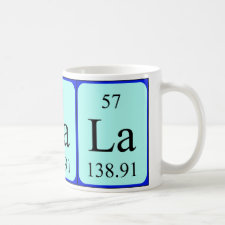
Authors: Hosseinnejad T, Ahmadi SJ, Karimi-Jafari MH
Article Title: Computational study on the structure and properties of ternary complexes of Ln3+ (Ln = La, Ce, Nd AND Sm) with 5,7-dichloroquinoline-8-ol and 4-vinyl pyridine.
Publication date: 2013
Journal: Journal of Structural Chemistry
Volume: 54
Issue: (2)
Page numbers: 283-291.
DOI: 10.1134/S0022476613020029
Abstract: In the present research, we have mainly concentrated on the survey of interactions in Ln3+ (Ln = La, Ce, Nd, and Sm) ternary complexes of 5,7-dichloroquinoline-8-ol (DCQ) and 4-vinyl pyridine (VP), [Ln(VP)2(DCQ)3]3+ by means of density functional theory, Hartree-Fock and Sparkle/PM3 semi-empirical computational methods. For VP and DCQ ligands, the cation binding energy sequence follows the order La3+ > Ce3+ > Nd3+ > Sm3+ as expected based on increasing in the hardness and decreasing in the ionic radius of this lanthanide cation series. A similar trend was observed in the calculated binding energy of the aforesaid ligands with the hydrated lanthanide cation series [Ln(H2O)9]3+, while the computed values of deformation energy of ligands upon complexation demonstrated an opposite order in the lanthanide cation series. Moreover, the solvent effects are considered via a polarized continuum model and provided a significant increase in the binding strength while the relative magnitude of binding energies is the same as that in the gas phase. Combining quantum and statistical mechanical calculations, we have also determined quantitatively a reliable estimate of the conformational distribution of the [Sm(VP)2(DCQ)3]3+ complex at various temperatures in the gas phase by computing the molecular partition functions and consequently the analysis of the conformational equilibrium constants
Template and target information: Lanthanide ions, La(III), Ce(III), Nd(III), Sm(III)
Author keywords: ion imprinting, lanthanide complexes, Density functional theory, polarized continuum model, conformational distribution



Join the Society for Molecular Imprinting

New items RSS feed
Sign-up for e-mail updates:
Choose between receiving an occasional newsletter or more frequent e-mail alerts.
Click here to go to the sign-up page.
Is your name elemental or peptidic? Enter your name and find out by clicking either of the buttons below!
Other products you may like:
 MIPdatabase
MIPdatabase









